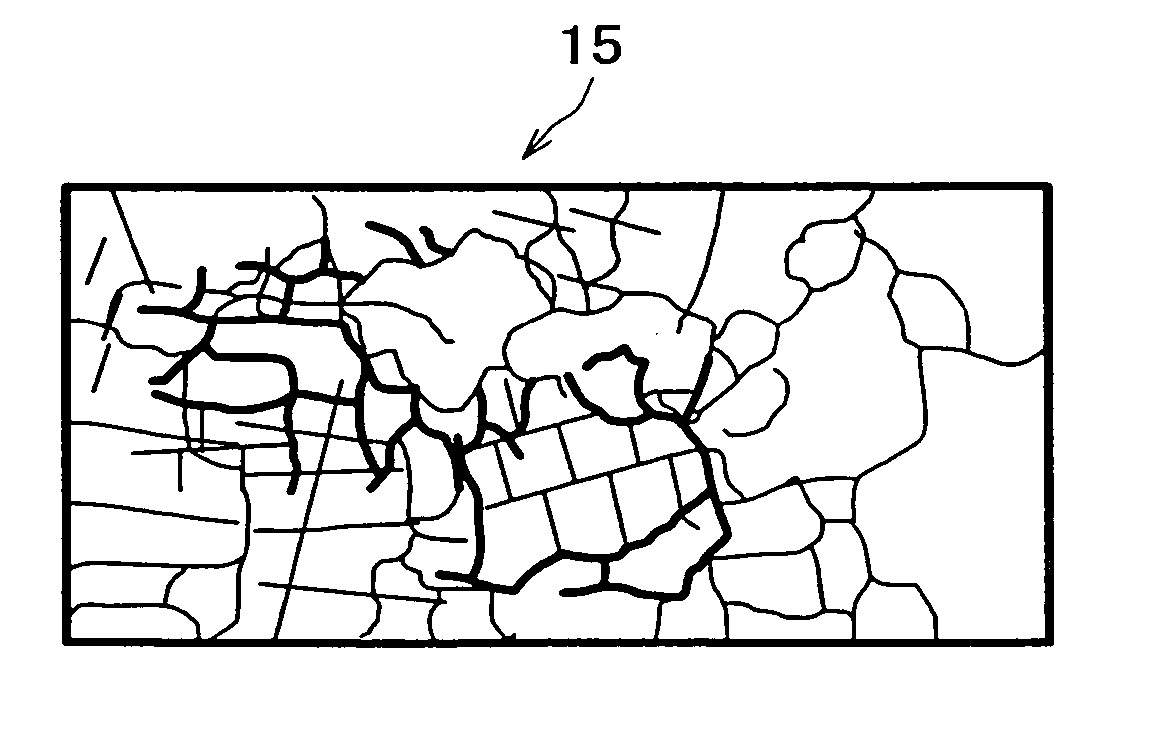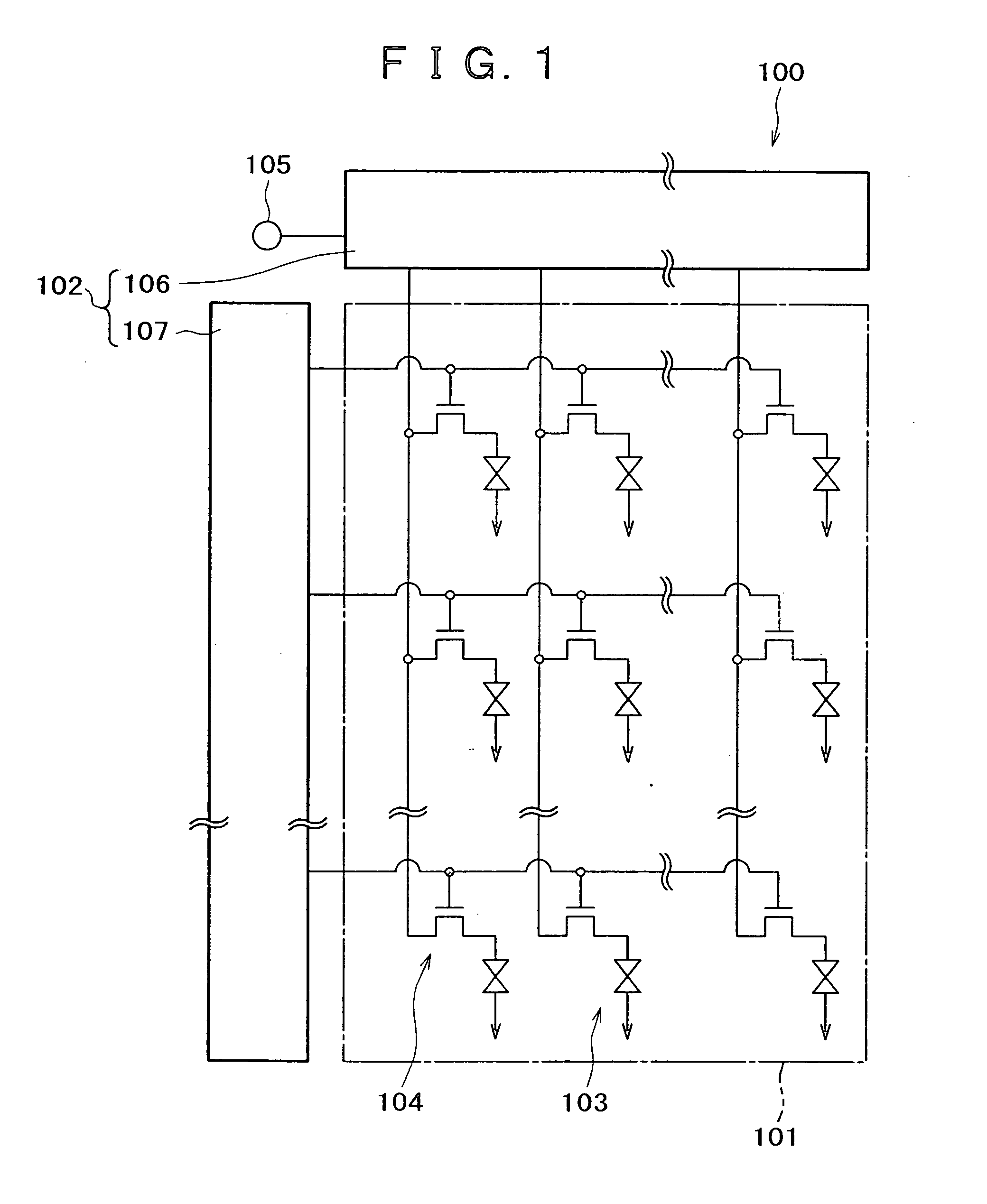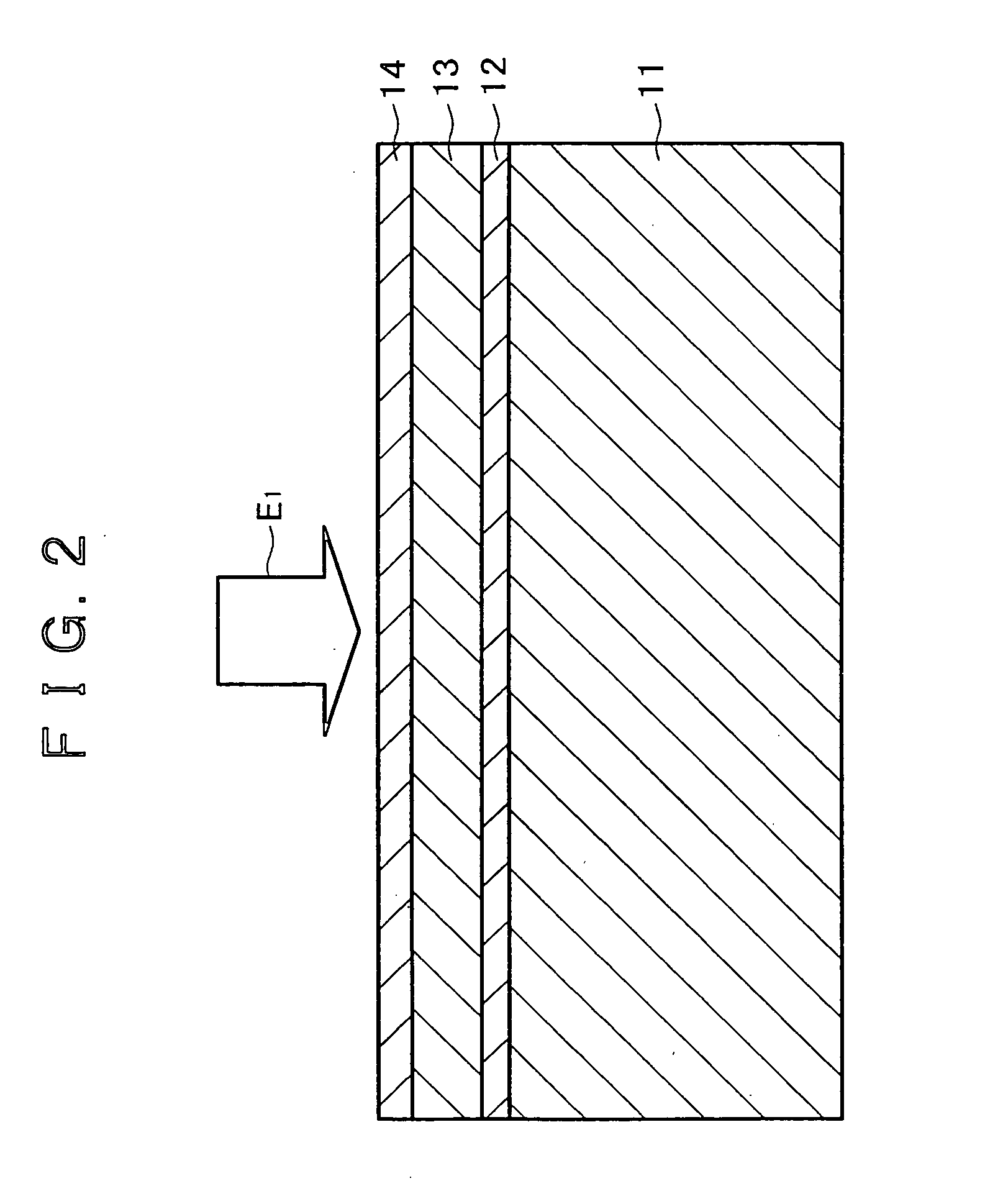Method of producing crystalline semiconductor material and method of fabricating semiconductor device
- Summary
- Abstract
- Description
- Claims
- Application Information
AI Technical Summary
Benefits of technology
Problems solved by technology
Method used
Image
Examples
example
[0104]FIG. 13A is a SEM (Scanning Electron Microscope) photograph of a crystalline film obtained by the first heat-treatment under the following conditions. FIGS. 13B and 13C are EBSP (Electron Back Scattering Pattern) photographs of the crystalline film in a normal direction and a rolling direction, respectively. FIG. 14 is a graph indicating the degrees of the {100} orientations with respect to the vertical direction of a glass substrate after repetition of pulse laser irradiation by 150 times, and FIG. 15 is a graph indicating the degrees of the {100} orientations with respect to the vertical direction of the glass substrate after repetition of pulse laser irradiation by 200 times. FIG. 16 is a view illustrating the normal direction (vertical direction of the glass substrate) and the rolling direction (in-plane direction of the glass substrate) shown in FIGS. 13B and 13C.
[0105] In addition, before the SEM photograph of the crystalline film is taken, the crystalline film is subje...
PUM
| Property | Measurement | Unit |
|---|---|---|
| Time | aaaaa | aaaaa |
| Temperature | aaaaa | aaaaa |
| Crystallinity | aaaaa | aaaaa |
Abstract
Description
Claims
Application Information
 Login to View More
Login to View More - R&D
- Intellectual Property
- Life Sciences
- Materials
- Tech Scout
- Unparalleled Data Quality
- Higher Quality Content
- 60% Fewer Hallucinations
Browse by: Latest US Patents, China's latest patents, Technical Efficacy Thesaurus, Application Domain, Technology Topic, Popular Technical Reports.
© 2025 PatSnap. All rights reserved.Legal|Privacy policy|Modern Slavery Act Transparency Statement|Sitemap|About US| Contact US: help@patsnap.com



